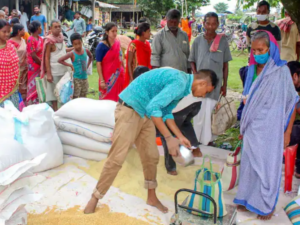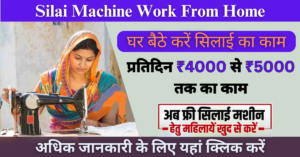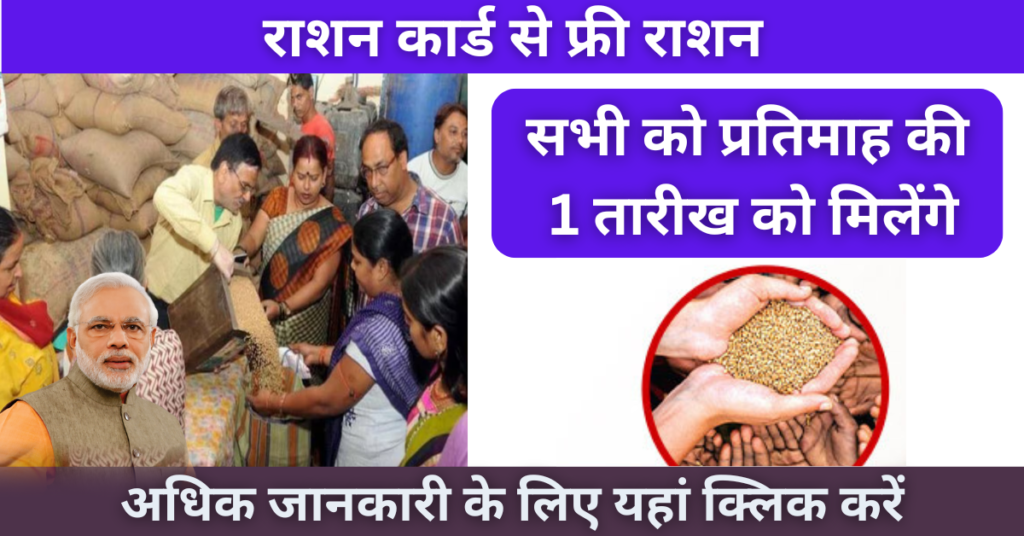
मुफ्त राशन योजना
Free Ration Yojana आर्थिक उतार-चढ़ाव और वैश्विक महामारी के कारण उत्पन्न हुई चुनौतियों के मद्देनजर, दुनिया भर की सरकारों ने अपने नागरिकों का समर्थन करने के लिए विभिन्न सामाजिक कल्याण योजनाओं को लागू किया है। भारत में एक ऐसा कार्यक्रम है, जिसे मुफ्त राशन योजना के नाम से जाना जाता है। यह योजना जरूरतमंद लोगों को आवश्यक खाद्यान्न उपलब्ध कराने के लिए बनाई गई है। इस ब्लॉग में हम इस कार्यक्रम के उद्देश्यों, कार्यान्वयन, प्रभाव और भविष्य की संभावनाओं पर चर्चा करेंगे।
मुफ्त राशन योजना क्या है?
Free Ration Yojana जिसे आधिकारिक रूप से प्रधानमंत्री गरीब कल्याण अन्न योजना (PMGKAY) के नाम से जाना जाता है, मार्च 2020 में COVID-19 महामारी के दौरान एक अस्थायी राहत उपाय के रूप में शुरू की गई थी। इस योजना का उद्देश्य गरीब households को मुफ्त खाद्यान्न प्रदान करना है, ताकि किसी को भी संकट के समय भूखा न रहना पड़े। यह पहल मौजूदा सार्वजनिक वितरण प्रणाली (PDS) पर आधारित है, जो खाद्य वितरण की मौजूदा संरचना का लाभ उठाती है।
योजना के उद्देश्य
- खाद्य सुरक्षा: प्राथमिक उद्देश्य गरीब जनसंख्या के लिए खाद्य सुरक्षा सुनिश्चित करना है।
- आपातकालीन सहायता: यह योजना प्राकृतिक आपदाओं या pandemics जैसे आपातकालीन स्थितियों के दौरान सुरक्षा का कार्य करती है।
- भुखमरी और कुपोषण को कम करना: मुफ्त खाद्यान्न प्रदान करके, यह योजना गरीब वर्गों में भुखमरी और कुपोषण को कम करने का प्रयास करती है।
- आर्थिक राहत: यह योजना गरीब परिवारों पर आर्थिक बोझ को कम करने का उद्देश्य रखती है।
मुफ्त राशन योजना की प्रमुख विशेषताएँ
1. कवरेज
Free Ration Yojana PMGKAY लगभग 800 मिलियन लोगों को कवर करता है, जिससे यह दुनिया के सबसे बड़े खाद्य वितरण कार्यक्रमों में से एक बन जाता है। राष्ट्रीय खाद्य सुरक्षा अधिनियम (NFSA) के तहत योग्य households इस योजना के लाभार्थी हैं।
2. खाद्यान्न का वितरण
इस योजना के तहत, योग्य households को प्रति व्यक्ति 5 किलोग्राम खाद्यान्न प्रतिमाह दिया जाता है। प्रदान किए जाने वाले खाद्यान्न में शामिल हैं:
- गेहूँ
- चावल
- मोटे अनाज
Free Ration Yojana कुछ राज्यों में दाल, तेल और अन्य आवश्यक वस्तुओं का वितरण भी किया जाता है।
3. अवधि
आरंभ में, योजना तीन महीनों के लिए शुरू की गई थी, लेकिन महामारी के चलते इसकी अवधि कई बार बढ़ाई गई है। वर्तमान में, यह योजना भविष्य में भी जारी रहने की उम्मीद है, जो आर्थिक स्थिति पर निर्भर करेगी।
4. कोई अतिरिक्त लागत नहीं
सबसे महत्वपूर्ण पहलू यह है कि खाद्यान्न लाभार्थियों को मुफ्त में प्रदान किए जाते हैं, जिससे उनके वित्तीय बोझ में काफी कमी आती है।
5. प्रौद्योगिकी-आधारित कार्यान्वयन
Free Ration Yojana PMGKAY का कार्यान्वयन प्रौद्योगिकी पर काफी निर्भर करता है। लाभार्थियों की पहचान और वितरण प्रक्रिया की निगरानी के लिए डिजिटल प्लेटफॉर्म का उपयोग पारदर्शिता और दक्षता सुनिश्चित करने में सहायक रहा है।
कार्यान्वयन तंत्र
1. राज्य सरकारें
केंद्रीय सरकार दिशानिर्देश तैयार करती है, जबकि राज्य सरकारें योजना के कार्यान्वयन के लिए जिम्मेदार होती हैं। Free Ration Yojana वे वितरण प्रक्रिया का प्रबंधन करती हैं, यह सुनिश्चित करते हुए कि खाद्य पदार्थ सही लाभार्थियों तक पहुँचें।
2. उचित मूल्य की दुकानें
खाद्यान्न का वितरण देश भर में उचित मूल्य की दुकानों (FPS) के माध्यम से किया जाता है। ये दुकानें सार्वजनिक वितरण प्रणाली का अभिन्न हिस्सा हैं और लाभार्थियों के लिए प्राथमिक संपर्क बिंदु के रूप में कार्य करती हैं।
3. लाभार्थियों की पहचान
लाभार्थियों की पहचान राष्ट्रीय खाद्य सुरक्षा अधिनियम के मानदंडों के आधार पर की जाती है, जो households को विभिन्न आर्थिक श्रेणियों में वर्गीकृत करती है। योजना समावेशिता पर भी जोर देती है, यह सुनिश्चित करते हुए कि हाशिए पर रहने वाले समुदायों को खाद्य सुरक्षा मिल सके।
4. निगरानी और फीडबैक
कार्यक्रम की प्रभावशीलता सुनिश्चित करने के लिए एक मजबूत निगरानी तंत्र स्थापित किया गया है। इसमें एक फीडबैक सिस्टम भी शामिल है, जहां लाभार्थी खाद्यान्न वितरण से संबंधित मुद्दों की रिपोर्ट कर सकते हैं।
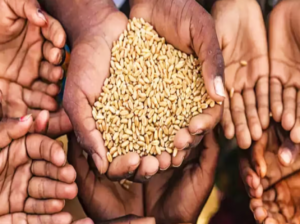
मुफ्त राशन योजना का प्रभाव
1. भूख में कमी
PMGKAY का सबसे तत्काल प्रभाव गरीब households में भूख के स्तर में महत्वपूर्ण कमी लाना रहा है। कई परिवार जो पहले अपने दैनिक पोषण की आवश्यकता को पूरा करने के लिए संघर्ष कर रहे थे, अब एक विश्वसनीय खाद्य स्रोत का लाभ उठा रहे हैं।
2. आर्थिक राहत
मुफ्त खाद्यान्न प्रदान करके, योजना ने परिवारों को पैसे बचाने में मदद की है, Free Ration Yojana जिससे वे अपनी सीमित संसाधनों को स्वास्थ्य देखभाल और शिक्षा जैसे अन्य आवश्यकताओं पर खर्च कर सकें।
3. पोषण स्तर में सुधार
आवश्यक खाद्यान्न की उपलब्धता ने लाभार्थियों के पोषण स्तर में सुधार में भी योगदान दिया है, विशेष रूप से ग्रामीण क्षेत्रों में जहां कुपोषण दर एक स्थायी समस्या रही है।
4. रोजगार सृजन
यह योजना अप्रत्यक्ष रूप से लॉजिस्टिक्स और वितरण क्षेत्रों में रोजगार के अवसर पैदा कर रही है, क्योंकि खाद्य वितरण की बढ़ती मात्रा को संभालने के लिए अधिक श्रमिकों की आवश्यकता है।
5. सार्वजनिक वितरण प्रणाली को मजबूत करना
PMGKAY ने मौजूदा PDS की ताकत और कमजोरियों को उजागर किया है, जिससे सुधार और प्रणाली में सुधार के लिए आह्वान किया गया है। इसने खाद्य सुरक्षा मुद्दों के बारे में सार्वजनिक जागरूकता भी बढ़ाई है।
- मुफ्त राशन योजना सरकार की खाद्य सुरक्षा के प्रति प्रतिबद्धता का प्रतीक है, जो सबसे कमजोर नागरिकों का समर्थन करती है। जबकि कार्यक्रम ने भूख को कम करने और आर्थिक राहत प्रदान करने में महत्वपूर्ण प्रगति की है, मौजूदा चुनौतियाँ निरंतर सुधार के प्रयासों की आवश्यकता को दर्शाती हैं।
- जैसे-जैसे भारत महामारी के बाद की पुनर्प्राप्ति की दिशा में बढ़ता है, खाद्य सुरक्षा पहलों जैसे PMGKAY का भविष्य एक अधिक सक्षम और समतामूलक समाज के निर्माण में महत्वपूर्ण भूमिका निभाएगा।
- इस प्रकार की पहलों की महत्ता को मान्यता देकर और मिलकर काम करके, हम यह सुनिश्चित कर सकते हैं कि कोई भी व्यक्ति एक बेहतर भविष्य की खोज में पीछे न छूटे।
Free Ration Yojana
Introduction
Free Ration Yojana In the face of unprecedented challenges brought on by economic fluctuations and the global pandemic, governments worldwide have implemented various social welfare schemes to support their citizens. Free Ration Yojana One such initiative in India is the Free Ration Yojana, which is aimed at providing essential food grains to those in need. This blog will delve into the details of this program, exploring its objectives, implementation, impact, and future prospects.
What is the Free Ration Yojana?
The Free Ration Yojana, officially known as the Pradhan Mantri Garib Kalyan Anna Yojana (PMGKAY), Free Ration Yojana was launched in March 2020 as a temporary relief measure during the COVID-19 pandemic. The scheme aimed to provide free food grains to the poorest households in India, ensuring that no one goes hungry during times of crisis. The initiative expanded on the existing Public Distribution System (PDS), leveraging the government’s existing infrastructure to distribute essential commodities.
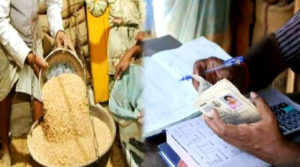
Scheme
- Food Security: The primary aim is to ensure food security for vulnerable populations, particularly those below the poverty line.
- Support During Emergencies: The scheme serves as a safety net during emergencies, such as natural disasters or pandemics.
- Reduce Hunger and Malnutrition: By providing free access to food grains, the initiative aims to reduce hunger and address malnutrition among the poorest segments of society.
- Economic Relief: It seeks to alleviate the economic burden on low-income families during tough times.
Free Ration Yojana
1. Coverage
The PMGKAY covers approximately 800 million individuals across the country, making it one of the most extensive food distribution programs in the world. Households eligible under the National Food Security Act (NFSA) are beneficiaries of this scheme.
2. Distribution of Food Grains
Under the scheme, eligible households receive 5 kilograms of food grains per person per month. The types of food grains provided include:
- Wheat
- Rice
- Coarse grains
The government also makes provisions for the distribution of pulses, oil, and other essential commodities in some states.
3. Duration
Initially, the scheme was set to run for three months, but due to the ongoing pandemic and the pressing need for food security, it has been extended multiple times. As of now, it is expected to continue for the foreseeable future, depending on the economic situation.
4. No Additional Cost
The most significant aspect of the scheme is that the food grains are provided free of cost to the beneficiaries, easing their financial burden significantly.
5. Technology-Driven Implementation
The implementation of the PMGKAY relies heavily on technology. The use of the digital platform for the identification of beneficiaries and monitoring the distribution process has been instrumental in ensuring transparency and efficiency.
Implementation Mechanism
1. State Governments
While the central government lays down the guidelines, state governments are responsible for implementing the scheme. They manage the distribution process, ensuring that the food reaches the intended beneficiaries.
2. Fair Price Shops
Food grains are distributed through a network of Fair Price Shops (FPS) across the country. These shops have been integral to the Public Distribution System and serve as the primary point of contact for beneficiaries.
3. Identification of Beneficiaries
The identification of beneficiaries is based on the National Food Security Act criteria, which categorizes households into different economic strata. The scheme also emphasizes inclusivity, ensuring that marginalized communities have access to food security.
4. Monitoring and Feedback
To ensure the effective functioning of the program, a robust monitoring mechanism is in place. This includes feedback systems where beneficiaries can report issues related to the distribution of food grains.
Challenges Faced
Despite its successes, the Free Ration Yojana has faced several challenges:
1. Distribution Issues
In many regions, beneficiaries have reported delays and irregularities in the distribution of food grains. Ensuring timely and equitable distribution remains a significant hurdle.
2. Identification of Beneficiaries
Some eligible households have faced challenges in being recognized as beneficiaries due to bureaucratic hurdles, leading to exclusion.
3. Corruption
Corruption at various levels can undermine the effectiveness of the scheme, with reports of food grains being siphoned off or sold in black markets.
4. Dependence on the Scheme
While the PMGKAY is a critical lifeline, long-term dependence on such schemes can lead to complacency and hinder sustainable economic growth.
Future Prospects
1. Long-Term Implementation
Free Ration Yojana Given the ongoing economic uncertainties, there is a strong argument for the PMGKAY to be transformed into a permanent feature of India’s social welfare strategy.
2. Comprehensive Food Security Strategy
Moving forward, the Free Ration Yojana government may need to consider a more comprehensive food security strategy that includes agricultural reforms, nutrition programs, and employment generation initiatives.
3. Leveraging Technology
Investing in technology Free Ration Yojana for better monitoring and distribution can address many of the current challenges, improving transparency and efficiency in the system.
4. Community Involvement
Encouraging community Free Ration Yojana participation in the monitoring of food distribution can help in reducing corruption and ensure that the benefits reach the intended recipients.
-
Hindi Mai Khoj – Click Here
-
Official Link – Click Here

